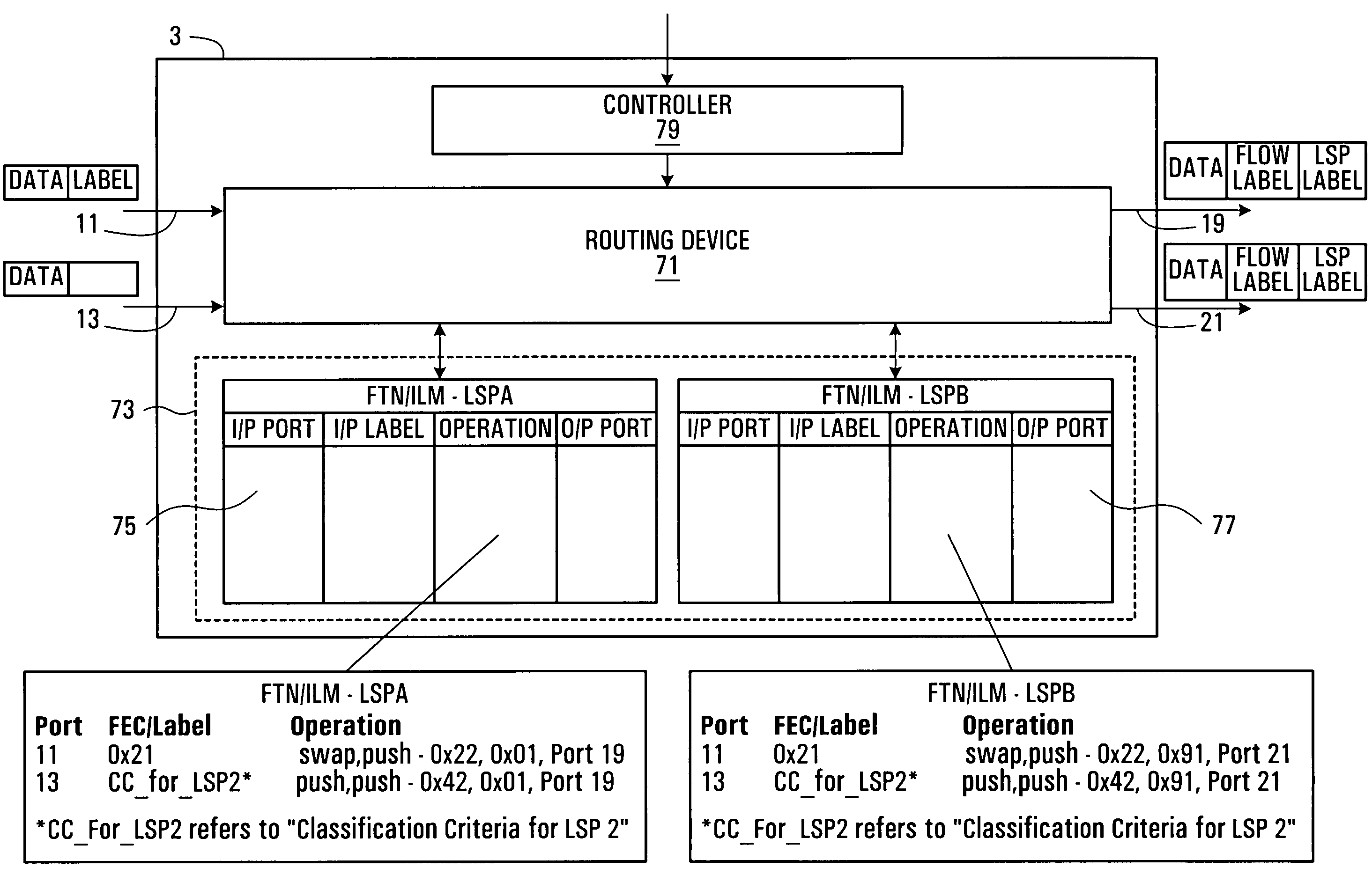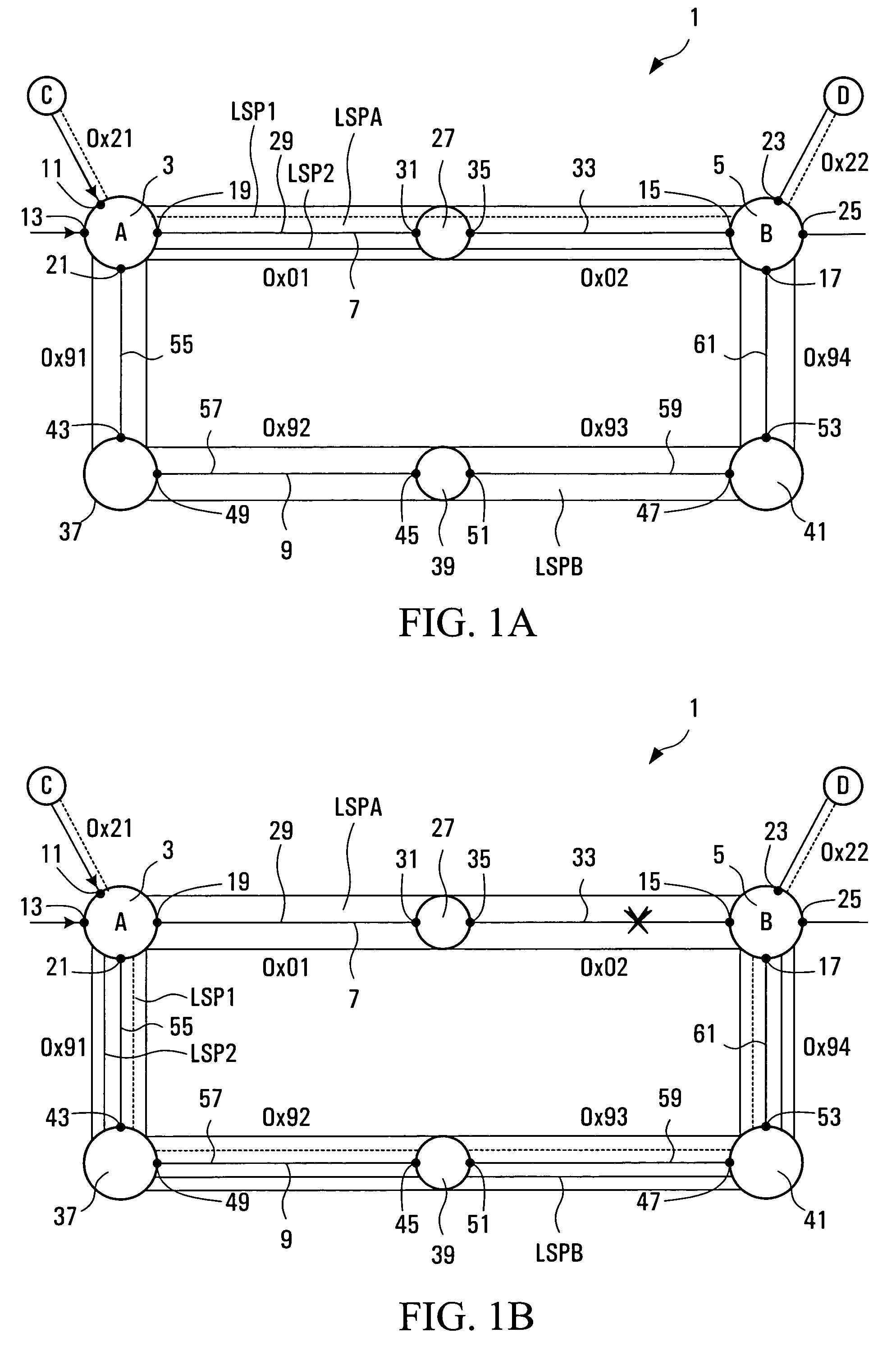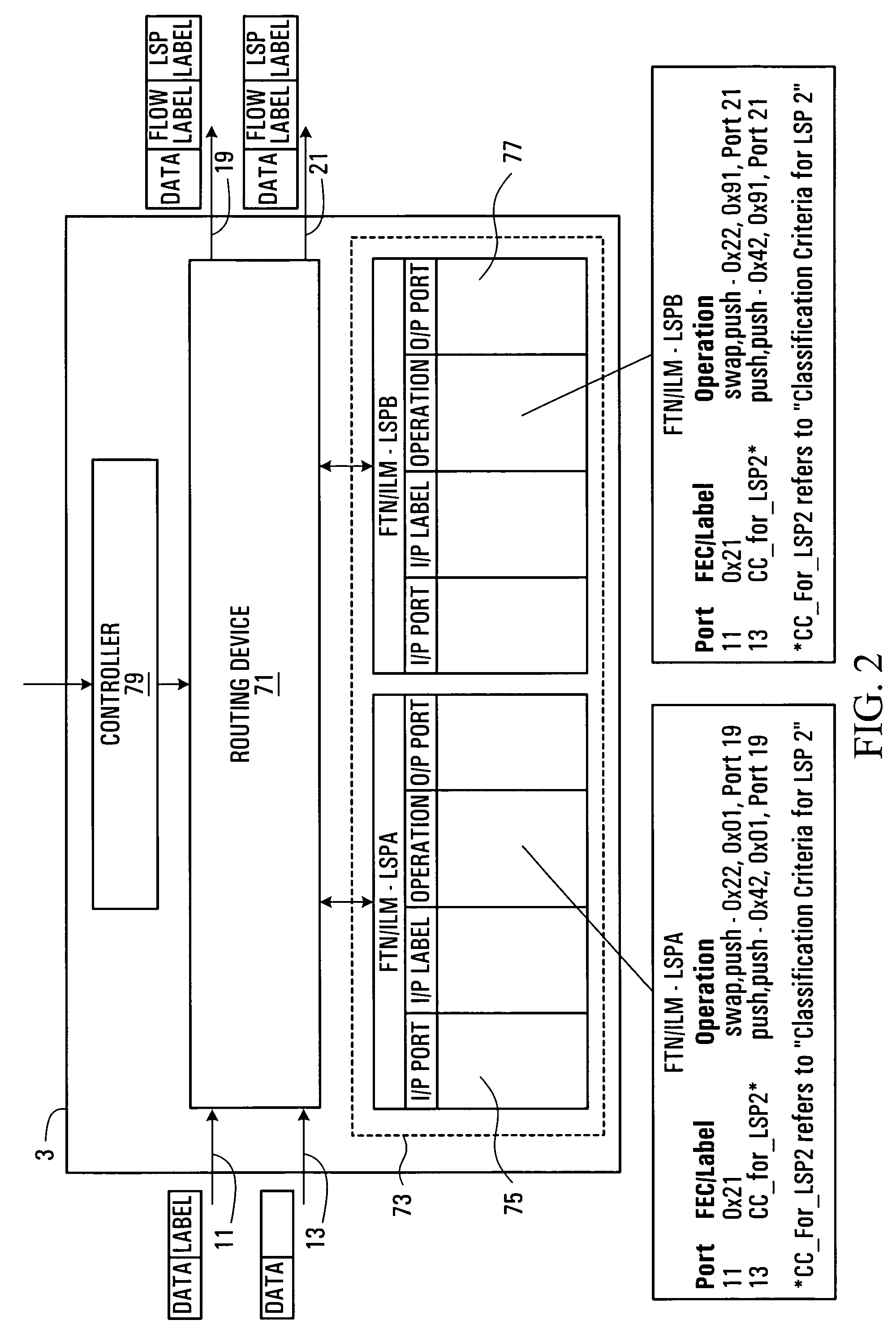Label switched communication network, a method of conditioning the network and a method of data transmission
a technology of label switching and communication network, applied in the field of label switching communication network, can solve the problems of time required to complete restoration for large number of lsps, difficulty in ensuring the continuity of the network, so as to reduce the time of restoration
- Summary
- Abstract
- Description
- Claims
- Application Information
AI Technical Summary
Benefits of technology
Problems solved by technology
Method used
Image
Examples
Embodiment Construction
[0025]Referring to FIG. 1, a communication network, in accordance with an embodiment of the present invention, and generally shown at 1, comprises a first switching router 3 at node A, a second switching router 5 at node B and first and second communication paths 7, 9 extending between the first and second switching routers 3, 5. Each of the first and second switching routers 3, 5 has a plurality of input ports 11, 13, 15, 17 and a plurality of output ports 19, 21, 23, 25. The first communication path 7 includes an intermediate switching router 27, a communication link 29 connected from an output port 19 of the first switching router to an input port 31 of the intermediate switching router 27, and a second communication link 33 connected from an output port 35 of the intermediate switching router 27 to an input port 15 of the second switching router 5. The second communication path 9 includes a plurality of intermediate switching routers 37, 39, 41 each having an input port 43, 45, ...
PUM
 Login to View More
Login to View More Abstract
Description
Claims
Application Information
 Login to View More
Login to View More - Generate Ideas
- Intellectual Property
- Life Sciences
- Materials
- Tech Scout
- Unparalleled Data Quality
- Higher Quality Content
- 60% Fewer Hallucinations
Browse by: Latest US Patents, China's latest patents, Technical Efficacy Thesaurus, Application Domain, Technology Topic, Popular Technical Reports.
© 2025 PatSnap. All rights reserved.Legal|Privacy policy|Modern Slavery Act Transparency Statement|Sitemap|About US| Contact US: help@patsnap.com



